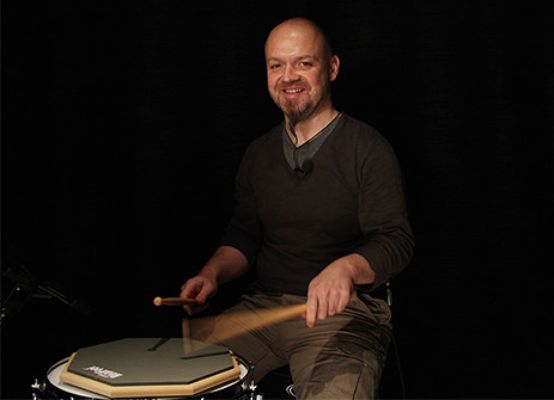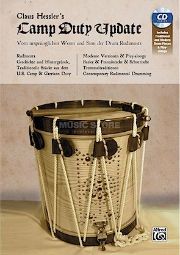Daybreak on the drumset
Claus Hessler researches the origins of drum signals and how they were adopted in various schools of rudimental drumming.

The activities in the military garrisons were determined by the drums. Specific drum pieces gave the soldiers the signal for day watch, assembly, inspections, eating or night rest. The soldiers were expected to familiarize themselves with the drum signals and follow the orders immediately. (Free translation from www.warnersregiment.org)
The Camp & Garrison Duty is a catalog of traditional drum pieces. Claus Hessler traces their path from their beginnings in the British army to the modern drumset in his latest work Camp Duty Update. He begins with the historical background and contexts of European drumming tradition, from where the transfer to the various schools of rudimental drumming is traced.
After a brief definition of the term "rudiment", the author takes us on an entertaining journey through time into the fantastic world of drumming. We learn that drums were first used as early as the 14th century, mostly in connection with warlike events, to transmit information, but also to intimidate the enemy. Hessler's horizon spans several centuries up to the modern era and practically all of Europe geographically. The statements on the geographical and musical classification of rudiments as well as the brief explanations of "drag" and "ruff" are very informative.
With the Air des fifres ou hautbois by the French court musician and composer André Danican Philidor, Hessler moves on to practice in the second third of his 90-page work. All the titles presented here are from the U. S. Camp & Garrison Dutythe collection from which Hessler derives the title of his course. There are delicacies such as The Downfall of Paris or Yankee Doodle. Pieces like these and many others are recorded with piccolo flute on the accompanying CD and are also available as play-alongs. Hessler presents the drum accompaniment in the original version and in his own arrangements - which provide a number of surprises. The author has also written interpretation aids for some pieces. These are intended to help the player by means of written-out rolls and ornaments. All music examples are written in Berger notation, which is briefly explained at the beginning of the book.
In his outlook, Claus Hessler uses the example of Another Grenadier the realization that the art of "marching drumming" can certainly be transferred to the drumset. A table towards the end of the book compares rudiments and their names in the various drumming traditions. The frequency of quintuplets in the following exercises is striking. The author writes in the foreword: "The fact that many rudiments gain significantly in comprehensibility and flow against the background of rhythms based on quintuplets may be a new aspect for many readers."
Camp Duty Update is a refreshing change in the great abundance of modern percussion literature - and should therefore not be missing from any well-stocked collection. Claus Hessler works as a clinician on an international level and writes for magazines such as Modern Drummer. With his book publications and the double DVD Drumming Kairos he has already set standards in the past. He teaches at the Frankfurt University of Music and Performing Arts, among others.
Claus Hessler: Camp Duty Update. Vom ursprünglichen Wesen und Sinn der Drum Rudiments, book and MP3-CD, 20255G, € 19.95, Alfred Music, Cologne 2015, ISBN-13:978-3-943638-93-6








